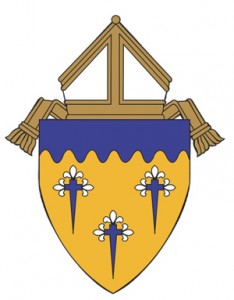Kathy Drinkwine
Safe Environment Coordinator & Coordinator of Assistance
. . . And the truth will set you free. (John 8:32)
Bishop James P. Powers’ release of the Abusive Clergy List this week is a momentous event for the Diocese of Superior. Reactions have been varied – sorrow, anger, relief, confusion, disbelief – and there are so many questions. Some have said, “It’s about time!” Others asked, “Why are we bringing this up again?” It’s important to understand that the publication of this list is about the healing of those abused.
Making this list public is an action intended to tell victims that they have truly been heard, that the church understands their pain and wants to be part of the healing. We must never forget that the wounds of those victimized are like the wounds of Christ – they never go away.
Whenever something of this magnitude is revealed, it is important to understand the history and context of what lead to this moment. The Catholic Church began to seriously address the issue of child sexual abuse by clergy in the 1980s. As allegations continued to be received by dioceses, bishops looked to their national organization, now the United States Conference of Catholic Bishops, for assistance and guidance. These agonizing questions, concerns and research culminated in a document called the Charter for the Protection of Children and Young People. The bishops gathered for their fall meeting in Dallas in November 2002 and this document was overwhelmingly approved. The Charter was then sent to Rome and was approved the following month by Pope John Paul II. With this approval, the everyday life of the Catholic Church in the United States was changed.
The Charter was never intended to be a one-time, fix-it-all creation. It is a living document, a set of articles and norms to guide dioceses in their efforts to create and maintain a safe environment for all of God’s children, now and into the future. There have been four editions of the Charter with another revision looming on the horizon.
The Charter has four main sections:
* To promote healing and reconciliation with victim/survivors of sexual abuse of minors,
* To guarantee an effective response to allegations of sexual abuse of minors,
* To ensure accountability of our procedures,
* To protect the faithful into the future.
The most well-known piece of the Charter is the expectation for training and background checks for clergy, employees, and volunteers as well as an annual training for the children in our schools and religious education programs. But it is more than that. The Charter provides direction on reaching out to victims and establishes a diocesan review board to advise the bishop on matters related to abuse. It provides clear guidelines to bishops for dealing with clergy accused of abuse. It safeguards children and those who “habitually lack the use of reason.” It demands clear behavioral standards for clergy and others in service to the Catholic Church. It demands accountability with annual audits and surveys.
Like so many things, the Charter has its own language and key words. Being “open and transparent” has always been a guiding force of the Charter. Bishop Powers’ release of the list of abusive clergy is part of the continuing efforts of the Diocese of Superior to be open and transparent about what has happened in the history of our diocese. The release of the list is also to assure those who have not yet come forward that they will be welcomed and respected.
Sexual abuse of children is a human problem. It knows no boundaries of any kind. The Catholic Church is doing all that it can to mitigate this issue and assure that children are safe within our walls. Releasing this list is one of the continuing steps toward healing and transparency.
The full text of the Charter may be found at https://www.usccb.org/resources/Charter-for-the-Protection-of-Children-and-Young-People-2018-
final%281%29.pdf.

